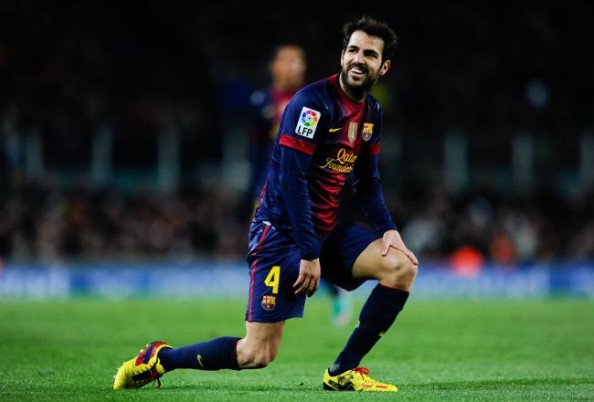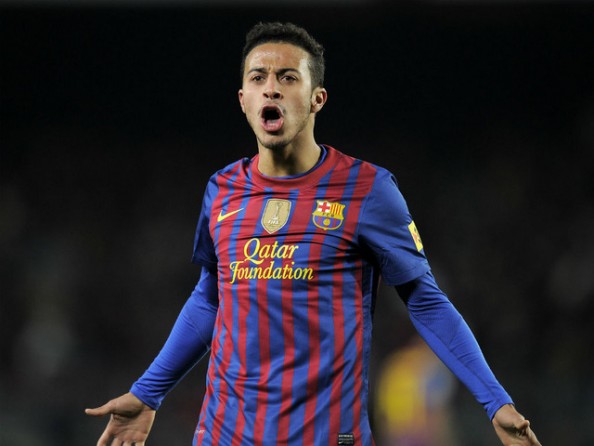Despite being a product of La Masia, it seems Cesc Fabregas hasn’t really found himself since arriving, or returning to football club Barcelona, being too much of an Arsenal man in the way he plays to perfectly fit the tactical needs his current club requires of him, raising the question, more than once, of if signing him at all costs while having a possibly more suitable player, like Thiago, growing from within, was the wisest choice to make.
Fabregas had a stunning start to his Barcelona career, playing behind the front three as the forward tip of the midfield diamond, but after a few goals in his early days with Barcelona, things have been up and down. He has switched positions while the tactics around him also changed. Despite his nine goals and 10 assists this season, there’s always this feeling of Fabregas being out of place, mostly a step behind what the rest of the team are doing.
Fabregas was thrust into the Arsenal lineup, immediately turning into the team’s most important player, and was treated as such. A free role as an advanced play-maker, Fabregas enjoyed forward bursts from behind the strikers, and developed into the midfielder who executes that aspect of the role better than anyone in Europe. And while initially, his “English” training looked like something that would bring him a huge advantage coming into Spain, often it looks like something that serves as a confusing factor.
Thiago is only 21, and can’t dominate the way Xavi and Andres Iniesta are doing right now. The important thing to remember about both players, usually considered as the best midfielders and play-makers in the world, is that they weren’t stars at 20 or 21. Xavi needed a long time before he became the dominant passing-usher he is today. Andres Iniesta had some frustrating years, labeled as too soft more than once, before Pep Guardiola arrived and everything suddenly clicked in perfect harmony.
Thiago knows how to play the Barcelona way of play making better than Fabregas, and when the two play alongside each other in the midfield, with Xavi taking a rest or Vilanova doing some tactical experiment, Thiago is usually the more dominant of the two. Fabregas struggles in a role that limits him tactically and when he does chose to make forward pushes and runs, they’re more than once ill-timed and futile.
This might be the midfield of the future for Barcelona, as long as there are no major changes. Of all the positions Barcelona equip with their own players, it always seems as if the center of the midfield is the most important area, where their own brand of style, tactics and training is what matters the most. Fabregas missed too many years while playing in England, and is still catching up, fighting with what his own instincts tell him to do.
While on almost every other team he’d be regarded as a huge star and success, the standards at Barcelona are a little bit different, where even a double-double season with an easy title win, not to mention at least the Champions League semifinal do not give people enough reasons to be pleased about what you’ve done.

